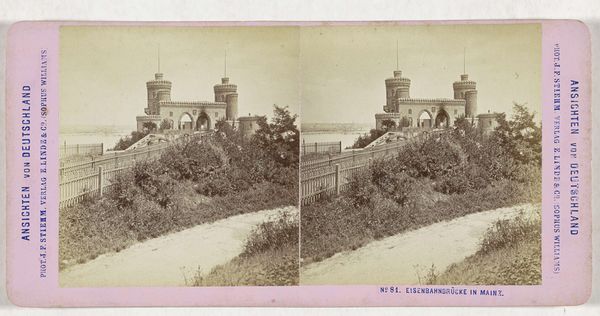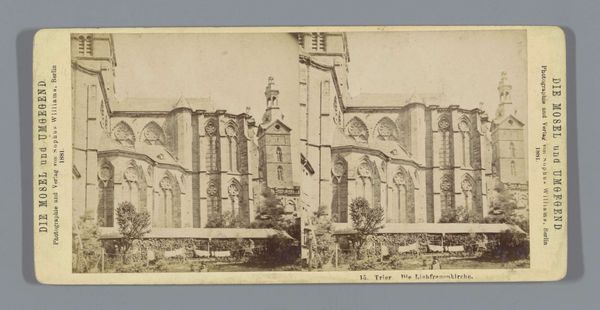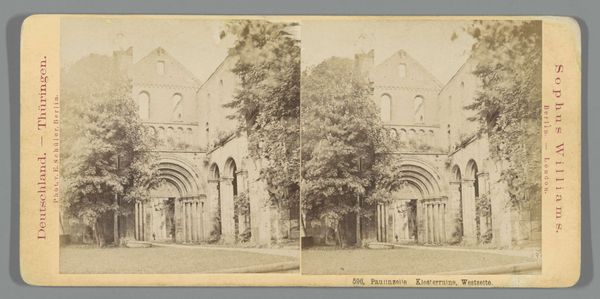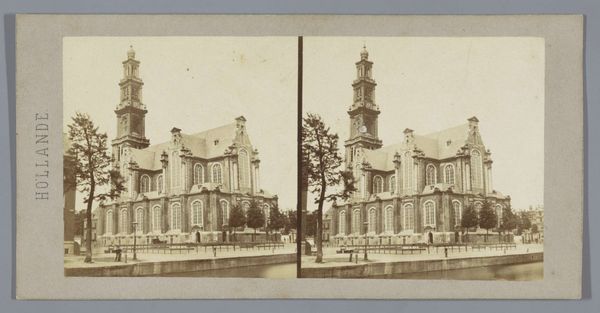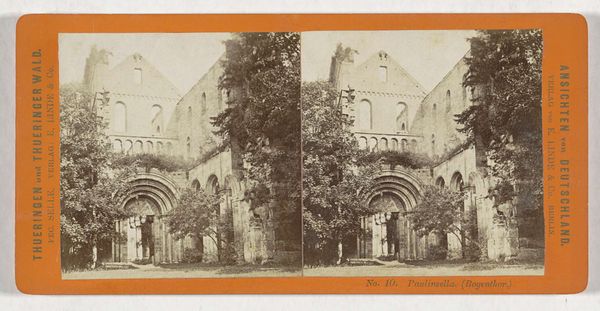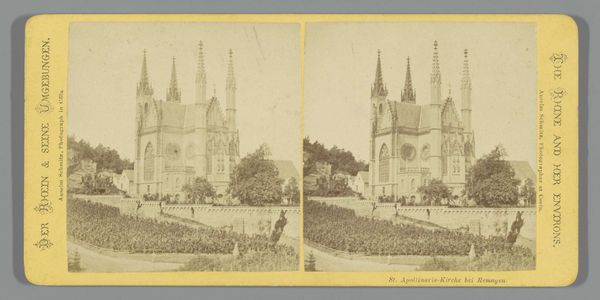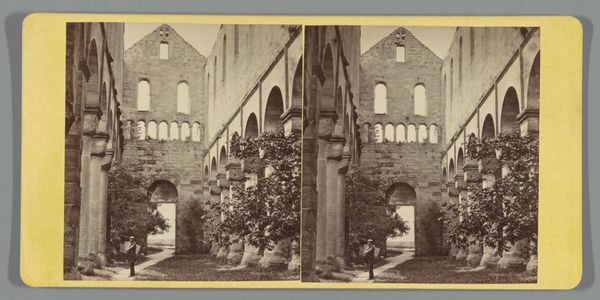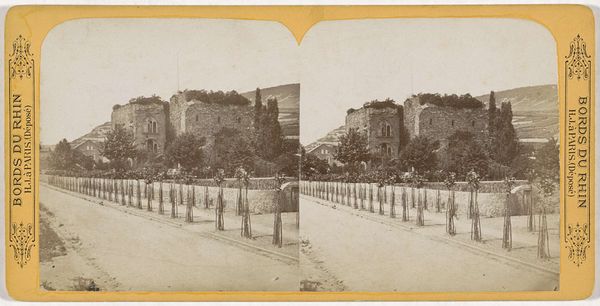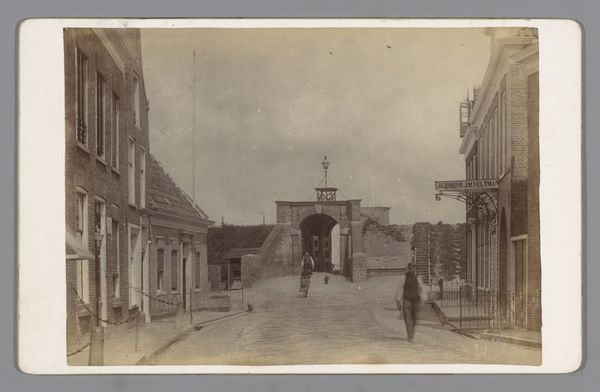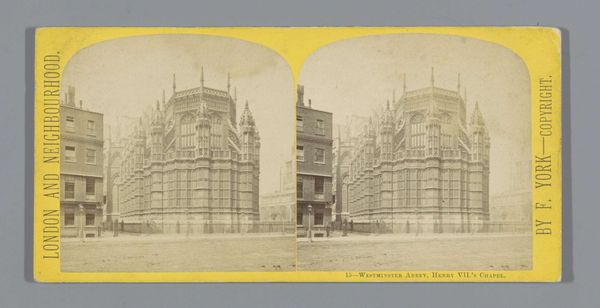
#
historical design
#
aged paper
#
homemade paper
#
paper non-digital material
#
sketch book
#
traditional media
#
personal journal design
#
personal sketchbook
#
old-timey
#
paper medium
#
building
Dimensions: height 85 mm, width 170 mm
Copyright: Rijks Museum: Open Domain
Curator: I find myself drawn into this monochromatic stereoscopic card depicting the front facade of the Benedictine Abbey of Saint Matthias in Trier, photographed by Sophus Williams in 1881. There's something about the depth achieved that captures my eye. What is your first impression? Editor: Stark. Severely symmetrical. It's interesting that we have two images to work with, as if doubting a single viewpoint of the Abbey, yet they almost collapse into one given the camera angle. Curator: Absolutely, and beyond the architectural record, what speaks to you in terms of symbolic resonance, especially concerning a site with such a storied past? Editor: Well, that’s exactly the puzzle, isn’t it? A Benedictine Abbey—a place of contemplation, self-sufficiency, learning—rendered in a doubled, flattened format. All detail and geometry, but strangely devoid of human presence in what is surely a space that’s existed to sustain life for many centuries. Curator: Indeed. The Saint Matthias Abbey holds deep spiritual weight; Saint Matthias is, allegedly, buried here and stands as the only Apostle to be interred in Germany. That knowledge, overlaid onto this particular depiction of architectural history, adds a fascinating layer. Notice the aged paper and how the warm sepia tones feel at odds with the rigid architectural style. It's a meeting of the sacred and secular here, captured at a pivotal moment. What semiotic analysis might you consider when viewing this aged photo? Editor: I notice that, even without any signs of wear from age, its monochrome tone grants the edifice and its environment an immediate symbolic dimension: past, historical, official. That then infuses even the smallest geometrical element within the image’s frame, from the pattern of bricks, the curves of the arched doors to the clock at the summit of the main tower. Everything is burdened by time. Curator: An insightful point. I was considering the act of repetition, of viewing an icon twice. Is Williams, here, hinting at deeper theological ideas? Perhaps he wishes us to question our own individual viewpoint to better understand and represent something monumental? Editor: Maybe. Or he just wants us to feel as though we’ve seen more, when perhaps the act of photographic duplication does little other than enforce similarity and stasis. The proof is left to the viewer to divine their own meaning. Curator: A provocative thought to end on. Regardless, exploring Sophus Williams' photograph through both formalism and iconic readings opens new pathways to understanding this sacred space.
Comments
No comments
Be the first to comment and join the conversation on the ultimate creative platform.
